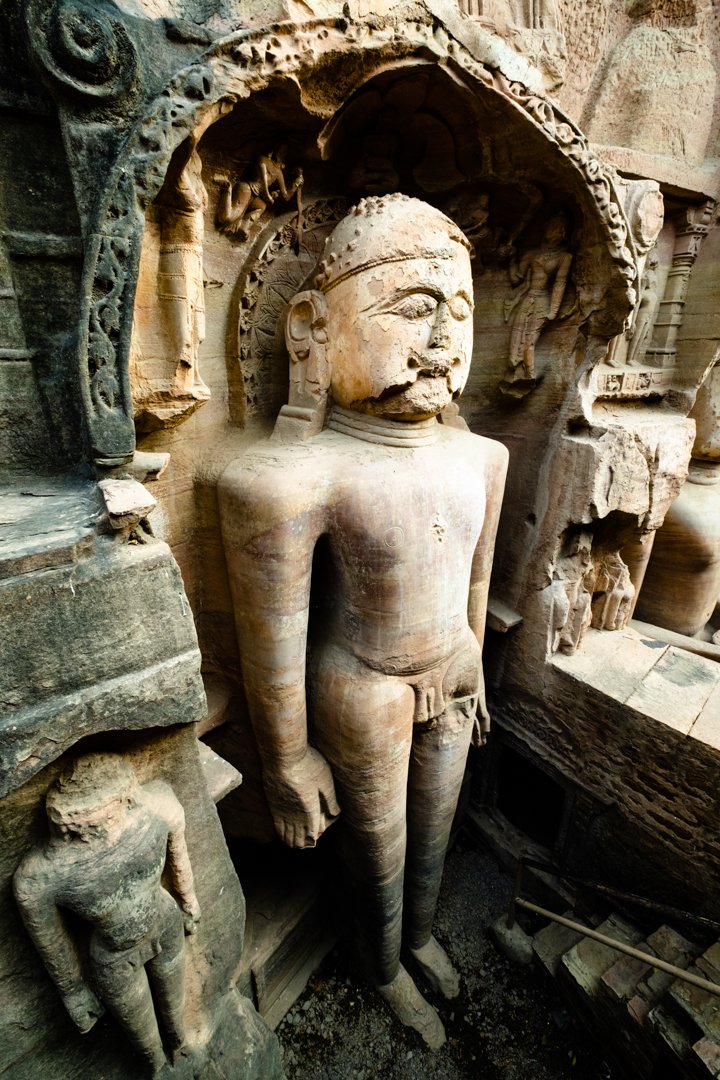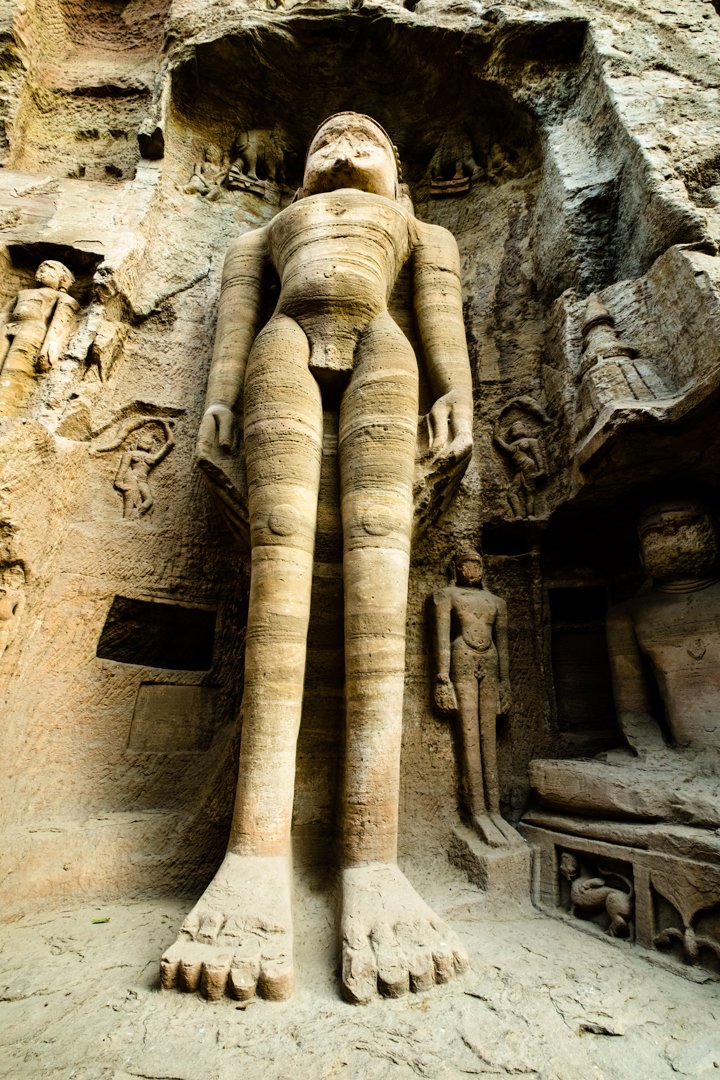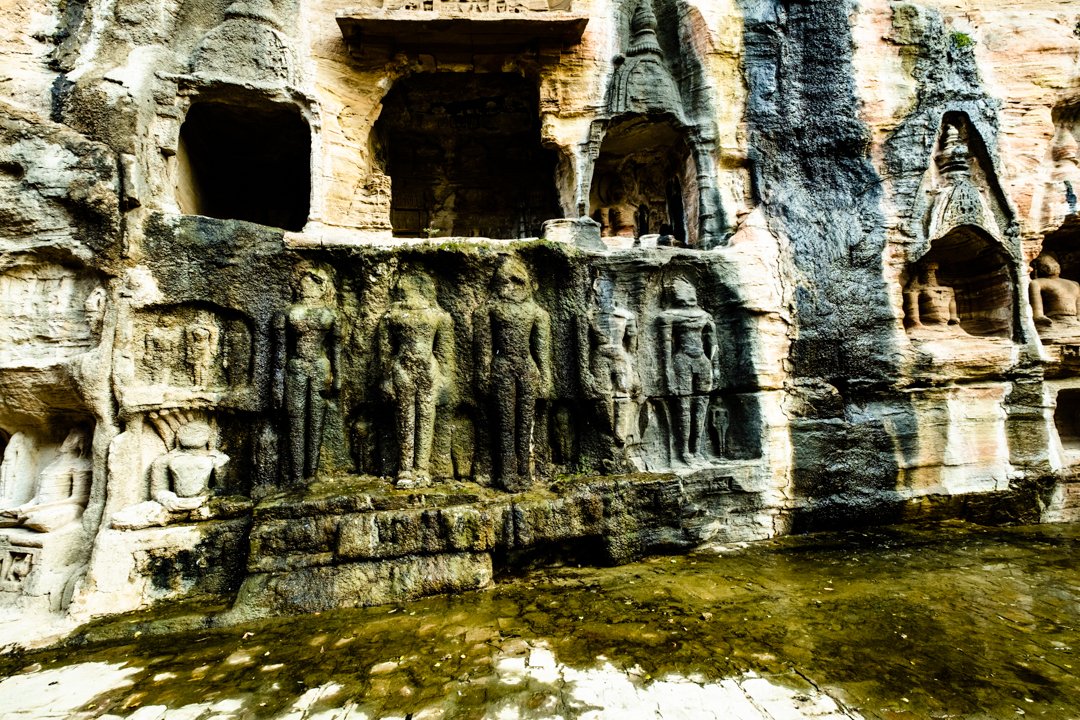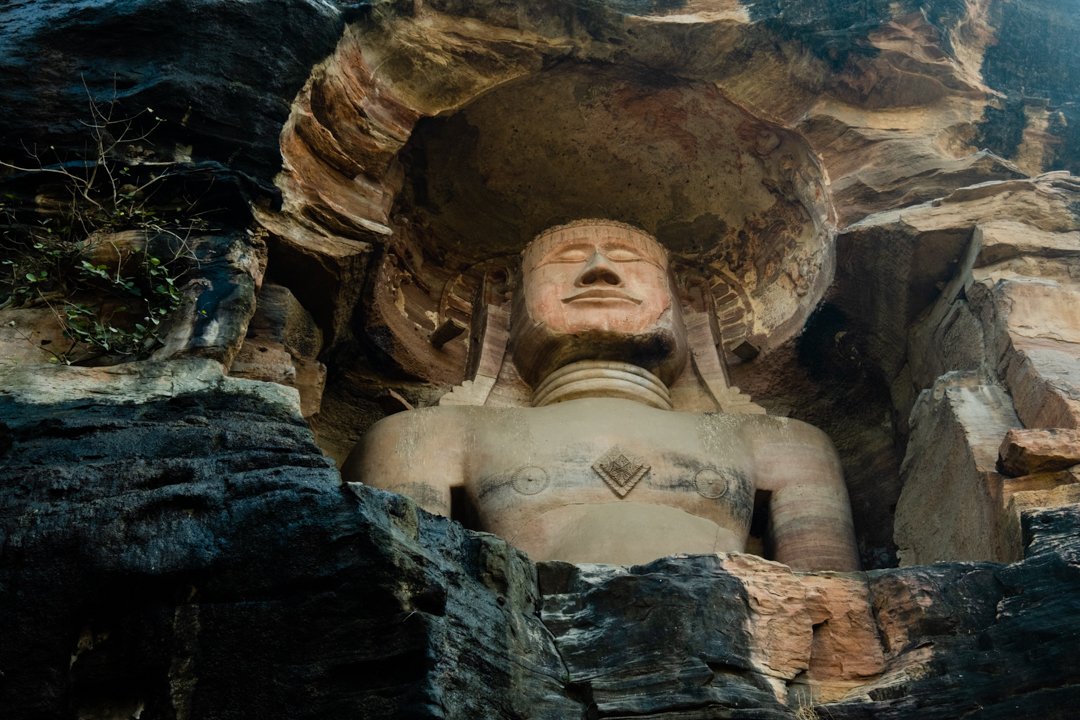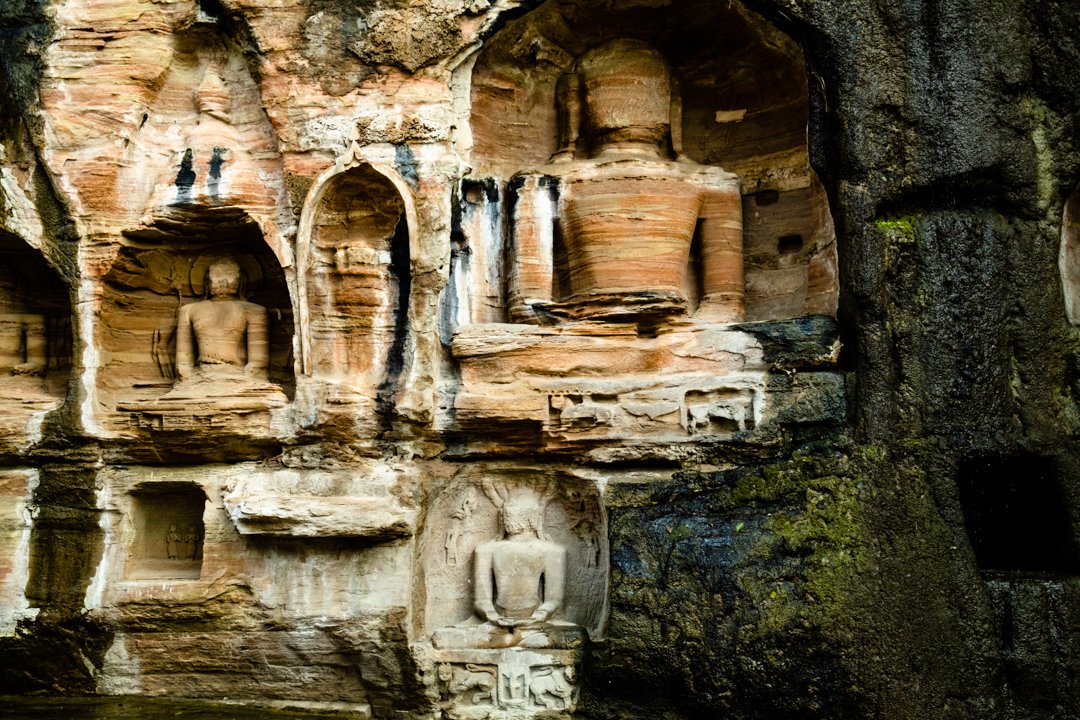These silent concrete structures are surrounded by water, living in isolation. Their concrete walls speak volumes of their past and present. Using photography and mixed media the language of the walls are echoed by each other as I explore the feelings of isolation and loneliness as well as a connection to my surroundings.
Read Morephotography
Shhh talk in whispers - Quiet Stewards. Bukchon Hanok Village
The Hanbok is the traditional dress of Koreans with bright colours, simple lines, and no pockets. Here you can hire them and later I found out if you wear the Hanbok you get free entrance into ‘the places’.
Read MoreIt's better to die than to be a coward - Ghurka Recruitment advert. Bhaktapur. Nepal
Bhaktapur is a small Newar town in the Kathmandu Valley where the past meets the present. It is known as the cultural capital of Nepal, and its streets and squares are teeming with vendors selling and creating the most intricately designed woodwork, pottery and bronze singing bowls. It is also the setting for Bertolucci’s acclaimed film The Little Buddha. This heritage town attracts not only tourists but wedded couples having their official photographs taken against the beautiful backdrops.
Although temples and castles are generally not our thing, this town is remarkable in its sheer scale and beauty. This is a UNESCO heritage site. The temples have been rebuilt since the 2015 earthquake - funded by UNESCO.
Following the 2015 earthquake the surrounding old town has been rebuilt by the residents without any financial aid.
Earthquake debris lies in mounds throughout the city.
Bhaktapur is famous for the rows of grey clay pots that bask in the sun to dry.
There are two pottery squares in Bhaktapur, with a communal kiln for the potters to fire their work.
Anyone who knows me even a little bit knows my affinity for paper. Nepalese Lokta paper frequently features in my art work so it comes as no surprise that I tracked down a paper-making factory ‘coincidently’ hidden away in the back streets of Bhaktapur.
The Peacock Shop, named after the nearby Peacock Window symbolising good luck and prosperity, is a monument to the work of Mr. Prajapati who is saving much of the Newar Heritage and rebuilding earthquake damaged buildings. His premises comprises of the paper-making factory, printing and book creations and also on the top floor is the owner's collection of carvings and furniture, some of it many years old which he has saved from being lost or destroyed.
Mr. Prajapati, the owner of The Peacock Shop
Mr. Prajapati’s son, Suyog has published a handmade book describing culture and Hindu-Buddist imagery. It has been handprinted in 6 languages. It was beautiful to see the actual old letter-press machine, the layout of the pages and the plates used to print the book.
‘Glimpses of Nepal’ Book cover plate.
The Lokta grows wild at an altitude of 6500ft or above in the Himalayas.
The Lokta bark is cooked, washed and beaten into pulp before it is dyed and then spread out on the mesh frames to dry out in the sun. Some papers have flowers and leaves added.
Making the bark pulp
Dying the pulp red
Dyed lokta pulp on the mesh with petals added
Various stages of drying paper on the rooftop
The paper is then pressed to the desired thickness and texture and cut to the required size.
Giant paper guillotine
Making covers for Lokta books
Mr Prajapati has also designed a house for a potter. It is made entirely of terracotta and glows a beautiful orange in the sunlight.
Mr. Prajapati’s kiln
House made of terracotta
The Dharka Topi - a hat worn by Nepalese men is part of their national identity.
As the sun begins to fade we leave a glowing Bhaktaphur. We throughly enjoyed our visit to this artists hub and my bundle of Lokta paper will be carefully packed and taken home, eventually.
Listen to your heart Spirit Speaks - Om Cafe slogan, Varanasi
Behind the ghats in the old, wonky, interlaced narrow alleys, the shops have been hit hard by covid and some traders are struggling to rebuild their lives. So many closed factories have killed the shopkeepers’ supply chains. Many have had to try and create new businesses. During Lockdown, some alleys have been brightly decorated. Building works are plentiful, the machinery isn’t.
If you don’t have a cow, milk is delivered straight to your jug - with a smile.
Some of the ghats are quieter and are a lovely place to sit and watch the world go by.


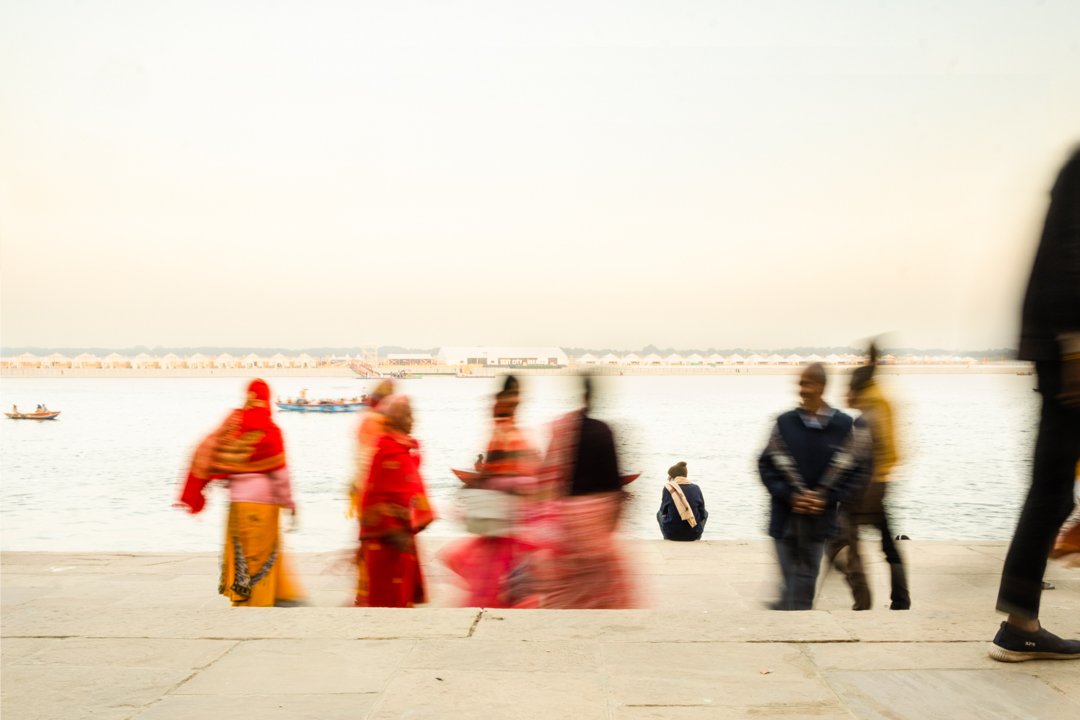
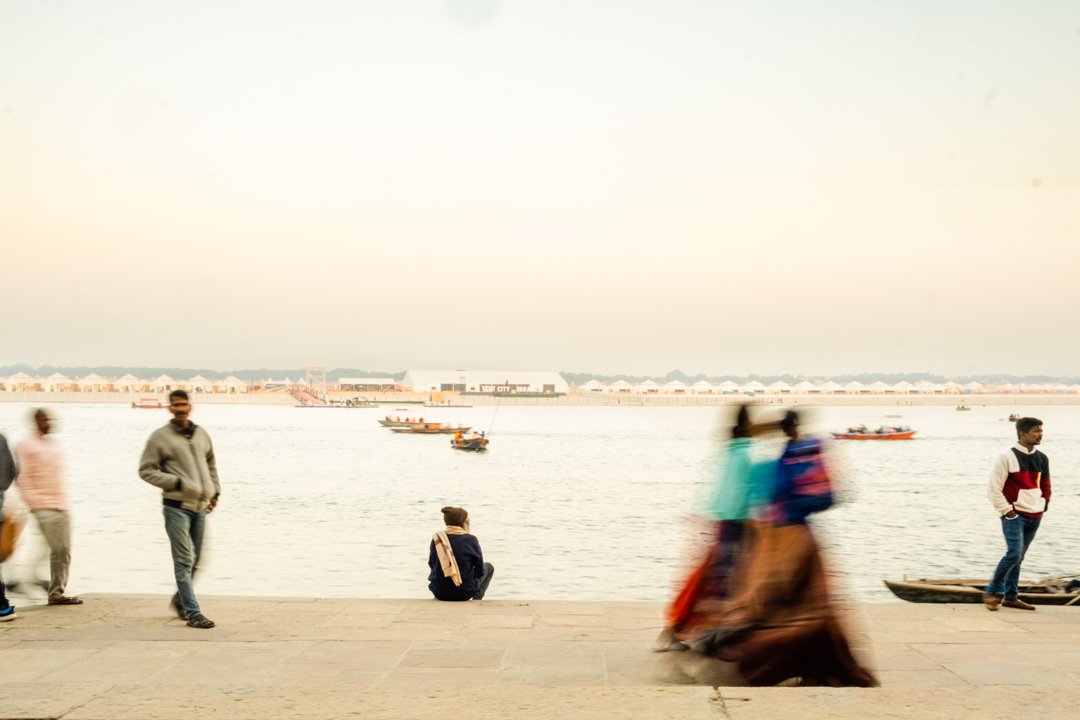
Our final evening in Varanasi had to be spent on the water again, this time we wanted to see the other side of the Ganges…
This has to be the biggest change we have seen here. We were shocked when we arrived to see what has become ‘the elephant in the room’ to the locals - Tent City, built by The Yogi Government over the other side of the river Ganges. What an empty, expensive eyesore. Created to cash in on the luxury end of the tourist industry and was inaugurated by PM Modi on the 13th Jan 2023. The tent city that resembles the sand dunes in Jaisalmer and Rann of Kutch in Gujarat apparently will showcase products from the East.
Apparently according to a newspaper ‘Tent City will add a new chapter to the tourism industry of the eastern UP and will bring financial benefits to the local people. The Tent City on the banks of the river Ganges will be a new chapter in the confluence of religion, spirituality and culture’.
I’m not wholly convinced. When I witness the numerous local boatsmen working so hard to make a living being overshadowed by huge Tent City party boats almost bullying them off the water, it doesn’t really enhance the culture or the spirituality of the place.
The locals still bathe, pray and play over this side but they are kept well away from Tent City. It is also where the families give up the cremated ashes to the holy river.
As we bid farewell to Varanasi, we spent our last evening on the water again with a local boatman. It gave us an opportunity to see the banks on other side of the Ganges.
We’ve tried hard to peel back a few more layers of this complicated city. It is breathtaking, frustrating, unique, chaotic and mesmerising and I doubt it will ever really face up to modernity.
Goodbye Varanasi, we have a plane to catch…
After a Full Belly, All is Poetry - Slogan stitched on fabric handbag, Varanasi Market.
From what I can see, Varanasi appears a little cleaner and tidier. The more populated ghats now have bins. They are empty, but it’s a positive move nevertheless.
There are less sacred cows wandering around the alleys. I miss the cows and their noon chapati snack-time. Less cows are on the main roads which obviously helps the flow of traffic and is safer for all involved. Apparently they have been rounded up and many are kept in cow shelters.
Unfortunately the domestic cows used for milk remain tethered on a short rope unable to do anything. A static, sad life for them. There seems to be many more dogs, goats and chickens wandering around, probably enjoying the chapati offerings.
A large tented area has been erected at Dashashwamedh Ghat for the homeless to have a bed for the night - this must be very welcomed.
The new pedestrianised area next to burning ghats is a very smart, clean walkway leading from the ghats up to the Golden Temple. It blends in well with its historical neighbours. It is still has a heavy police presence.
The light in Varanasi is beautiful. Together with its faded grandeur and the abundance of Indian fabrics makes for a very beautiful palette. A palette I hope to bring into my future artwork back home.
The colour orange burns especially bright in Varanasi. It shines in the marigold garlands on the dashboards of every taxi and the robes of the sadhus – the Hindu holy men.
Saffron is the most sacred colour in the Hindu religion. It signifies fire and the burning away of impurities. Sadhus can be found on the banks of the Ganges, in alleys and in public squares. Their long white beards and brightly coloured tunics, sometimes orange, sometimes bright red, make them look so photogenic, but a picture could cost you.
The city has a huge number of sadhus. Men who have given up their regular lives, homes, relationships, material goods and chosen a life of detached poverty relying only on what people offer them. Those that carry a stick are in the final quarter of their lives and have devoted it entirely to their religion. This will be their final resting place.
Varanasi, is considered to be the holiest of the seven sacred cities in the religions of Hinduism and Jainism. Hindus believe that dying in the city will bring eternal salvation and an end to the cycle of rebirth. Pilgrims come from all over to seek purification in the sacred waters. They come to cremate their kin and to spend their final days in peace
You regularly see heads being shaved along the ghats. Within the Hindu religion, ceremonial haircuts are very symbolic, occurring during certain life events. The first is a child’s first haircut, the second is during worship and pilgrimages to special temples, and the third being the haircut during the mourning of a loved one.
A child’s first haircut, which is known as a chudakarna, ideally happens when a child is 1or 3 years old. The child’s hair is fully shaved off, or a sheikh is maintained by some Hindus - a small patch is left untouched that creates a lock of hair which is left to protect the brain, as well as the area where the soul is believed to leave the body after death.
The act of tonsuring is when hair is cut for religious purposes. Tonsuring is prevalent in the temples of Varanasi. It’s an important custom in Hinduism, as the ritual of shaving one’s head allows you to be closer to God,
The final ceremonial haircut takes place when a family member dies. The Mundan is observed by the wife of the deceased, and the eldest son or male relative who is to perform the last rites. The wife is expected to keep her head permanently shaved from now on, as a symbol of her widowhood, while the male family member is to remain shaven during the mourning period only. It is seen as a symbol of grief and a mark of respect for the departed soul.
Varanasi is a cacophony of people and atmospheric activity ebbing and flowing through the course of a day.
Preachers teaching young priests in-the-making, beggars begging, sons performing last rites, braying loudspeakers, ceremonial bathers, chanting, overheated flaming pyres, black kites circling over head, bells chiming, dogs barking… all swathed in amber hues.
Trespassers will be shot - Painted wall Sign. Gwalior Air Force Base
After an 8 hour drive from Jaipur, we rocked up in Gwalior - a city in the central Indian state of Madhya Pradesh. We chose this place as it looked tranquil, beautiful and clean. Our accommodation was exactly that. Step outside and it was a different ball game. Gwalior is one of Modi’s many Smart Cities, where money has been invested. We thought this could be an interesting, developed place to visit. Well it’s not- in my opinion.
Gwalior is popular for its wide green cover all over the district - or so it claims. The pollution is the worst we have experienced. Little attempt appears to be made to improve the environment. The many brick-making chimneys on the outskirts create a thick dense smog that hangs over Gwalior by midday.
The lack of cars in the centre have simply been replaced by many noisy motorbikes and the planned new infra-structures have yet to have much effect. The roads are terrible in places which makes getting about slow and uncomfortable.
It’s the wedding season at the moment across India. Gwalior is a very popular place for weddings and has many complexes decorated ready to be hired. Many of the weddings celebrations we saw were taking place along the busy roadside with a piece of rope held around the dancing people.
There is a huge amount building-works on unused land around the outskirts of the city, creating sports complexes for differently-abled children, schools and housing. They are yet to be completed.
There are painted adverts everywhere, advertising education at all levels. Another element of the Smart City’s to-do list.I read that while the city has been progressing economically and financially, the availability of opportunities is apparently a lot less compared to New Delhi and other major cities. Students seeking good careers are apparently compelled to move out of Gwalior for better opportunities elsewhere. The higher level teachers do not have the required skills set.
Another Smart City plan is water 24x7 for everyone. We saw wells still being used to draw water in both town and countryside.
We ventured out on the first night to eat and unfortunately ended up with food poisoning, but on a positive note, our accommodation is a very lovely place to recover in.
The only reason tourists must venture to this part of India is to see the collection of temples out in the countryside and the rather beautiful fort looming over the town. On the way up to the fort there are the Gopachal rock-cut Jain monuments. The biggest statue reaching 57feet. They were an impressive sight.
We headed out into the countryside and visited the Bateswar Hindu Temples. A group of 200 sandstone stupas dating from the 6th century.
Since 2005, an archaeologist, KK Muhamed has restored about 60 of the temples and he is campaigning to get more done.
A school coach party arrived at the temple. They all rushed over and wanted to shake our hands. They were so excited. A lovely finish to our stay here.
Farewell Gwalior. We have a plane to catch…
Small or medium you are always ‘XL’ for us. - Federal Bank Advert. Jaipur
One misty morning we headed 10 kilometres out of Jaipur’s city centre to find the Monkey Temple.
We were greeted by goats, cows and of course monkeys - in abundance.
As soon as we pitched up 2 young brothers introduced themselves and offered to be our guides and protect us from the monkeys - all for the equivalence of a pound. How could we refuse?
Rishi and Naran were good guides, they loved the monkeys and helped us avoid the Babas’ who try to rip you off. Rishi was especially good with the monkeys and wanted to be a vet, but I guess life won’t give him that chance. He told us about all the animals and birds we saw and showed us videos of leopards which they had seen on the path we walked. Thankfully we did not meet them. There is known to be 46 leopards living in the locality, they come into the temple area to hunt the dogs and monkeys.
As we climbed up we passed lots of the local children kite-flying into the mist.
There are many temples within this mountainous site and a natural spring that flows down from the hilltop. The water from the spring fills up many water tanks which are considered very sacred and the pilgrims visiting the temple bathe in the holy water.
A newly married couple were on their way to the temple to be be blessed.
The boys were clever and tricked us into buying them dinner, but for 20p we thought it was funny. Telling us we had to pay the Baba a small fee for the temple, which transpired was a small bowl of Dahl for them each.
The boys were actually working for a gang who were operating as you went in through the gate. However, they were so charming and this is all their life is right now, we were more than happy to pay them well and enjoyed their lovely company and everything they taught us. At the ages of 14 and 12 life has forced them to grow up too early.
The monkey’s cheeks are rammed with the peanuts we fed him.
So now it’s time to bid farewell to Jaipur and all its wildlife. We throughly enjoyed our time here.
You Are Welcome in the School of Joy - School Sign. Jaipur.
A little apprehensive that Jaipur was going to be a tourist trap, be as that may, post covid it has been hit very hard. The huge bus-parks that roll in the tourists stand empty. Numbers are down, there is an air of desperation when we step off the train.
Jaipur is Rajasthan’s pink city - the ruling Maharaja had the whole city painted salmon pink -symbolising hospitality. It has been meticulously planned following a grid system where every element, even the road widths are based apparently on the number 9. All signage on the shop fronts is identical Hindi font. It is a very uniform, low-rise city.
The air quality is poor. Probably from the multitude of motorbikes and from cooking on wood.
We hooked up with Kumar, a local guide to help us get to grips with this huge place. We spent the whole day drifting around the old city tasting street foods and meeting artists and makers. As always I really enjoyed scraping beneath the surface and discovering some of the hidden gems.
Education Bookshop
Jaipur temple visitors
We met a father and son who handmade bronze pots. Unfortunately the son will be the end of this family tradition. There’s no money to be made from this anymore due to the availability of cheaper machine-made steel pots - just as functional but not as beautiful.
We went down Bell Puri Alley - every shop sells the Puri on an industrial scale.
This is the local court, for the residents to settle their own disputes instead of going to a formal court. Each side picks 2 people for a Jury and the public the final one.
A local screen-printer who prints the Temple prayer books
Being a paper obsessive, I couldn’t help but notice piles of printed ledger paper in a doorway. I just had to see more, it was a bit of a squeeze …
Guillotine Room
Printing Room
Delivery time.
The Marble section of the city is easily recognisable. It’s engulfed in a cloud of white dust so thick you need a mask. Each carver learns to carve a particular God. They carve that same God for the whole of their career.
The lime and chilli’s hang outside every business to ward off ill-feelings from their neighbours. They are replaced every week.
The dried leaves hanging across the shops are the remains of Diwali celebrations.
Jaipur is also famous for its jewellery and semi precious stones.
Silver Jewellers
Jewellers
Tailors
Towards the end of the day we met a local potter (the Master) and his family. We climbed up to the roof tops to fly kites with the children. There are hundreds of kites everywhere in Jaipur, in the sky, in the trees and in the streets. The boys and men fight them. We lost.
No.1 Kite Flying Team
No.1 Kite Flying Team’s proud Parents
Our final stop of the day was this street food vendor. Fried potato fritter mashed in a chickpea curry. Topped with mint sauce and tamarind. Oh my goodness, no wonder there is always a big crowd around this place. A little bit of heaven in a bowl.
We found Jaipur to be a friendly and fun place to explore.
There's No Craving a Thali Can't Fulfil - India Food Bus Advert. Old Delhi.
On our way with Mr Tuk Tuk to Chandni Chowk, Old Delhi we had a girl selling roses. We had to buy one, it’s a terrible racket, the bosses of these sellers take all the money, the girls cant go home until they’ve sold them all.
Since we were last here, Plans to pedestrianise the 1.4km stretch of Chandni Chowk began in 2021 with a big development programme the first being - No motorised vehicles only cycle rickshaws, allowed between 9.00 - 9.00pm. This first has has almost all but failed. The council were only allowing 400 licensed cycle rickshaws in the area , but now there are over a 1000 as the drivers can make a weeks money in a day. The tuk tuks, motorbikes and auto rickshaws are back in full force apparently with tickets being issued to the drivers for breaking the rules. The pedestrians have been pushed to the pavements, unfortunately they have been dug up and you have to clamber over the rubble. Subsequently it’s still as chaotic, still as noisy but still as charming. Old Delhi is a sight to behold, a tangle of old streets and alleyways and complete mayhem.
Cycle rickshaws are very labour intensive, sometimes all you can do is push them.
The Spice Market, was in full swing this time around. Upstairs is the large scale trading of chilli’s. The air is thick with the smell. Once that chilli gets hold of you, you can’t stop coughing and sneezing. Chai is frequently passed round to ease the stall holders coughs.
The dedicated areas have a ridiculous amount of shops and are full to the brim - you can buy everything and anything here. Wedding, household, food, clothes - the list is endless.
We tried a few eateries and had the tastiest food. I think our favourite was Giani’s. Our plates food cost the equivalent of 90p - we had the one at the top of the menu - chickpea curry on bread.
Very tasty fried potatoes
Making Chai
As the day drew to a close we popped into the Gurudwara of Sis Ganj Sahib. We listened to the prayers.
It is the martyrdom site of the ninth Sikh Guru- Guru Tegh Bahadur who was executed here. Hence its name Temple of the Beheaded.
Since it was getting towards the end of dinner and a little less chaotic, they feed approx 35,000 people for free in a day, we went to the kitchens to see the giant vats where all the food was prepared. we were offered dinner, but we were so full from trying so many dishes we unfortunately had to decline.
The final area we went into before retrieving our shoes was the cloakroom. Here a group of volunteers mend and clean the visitors shoes should they need it, all are of charge.
Farewell Delhi, we are now moving on to Jaipur…
Team Work Makes the Dream Work - Defence Colony Wall, New Delhi.
Hello Delhi!!
It’s Winter now in Delhi and our visit began at a chilly 12 degrees rising to 20 after just a couple of days. So I guess that’s winter finished for us but not for the Delhi dogs, they are wrapped up in their lovely coats all donated by the locals.
It is wonderful to be back, to see new things and revisit a couple of favourites. This trip begins at the our 21st bed-stop in 2019 - C99 Defence Colony, New Delhi. So this is the beginning of a new travel experience which I hope to recreate in my blog.
A new area for us to visit was Harkesh Nagar Okhla. Here is the Sanjay Colony, the biggest of the many poverty colonies in Delhi.
We met a former resident who grew up in the colony and now works for a charitable organisation helping provide extra education to facilitate a way out for the youngsters. In the state school there are 100 pupils in each class. Girls in the morning, boys in the afternoon.
We visited the Charity’s school, here they teach English and Computers.
This colony has approximately 50,000 people living in different blocks, covering 25 acres - that’s about 18 football pitches. The Sanjay Colony is next to a textile industrial area so this makes it a better place to live as there is the chance of work close by. The women sort the shredded fabric remnants and earn the equivalent of £3 per 12hr day, the men work in the sewing factory and earn approximately £150 a month.
The work is harsh and unpleasant but it is work and it means food can be bought from the colony market at the end of each day.
The cows and goats belong to the colony to provide milk for the residents.
Understandably photography was NOT allowed in the Colony residential area. We met lots of families and were very humbled by our experience.
Living in such close proximity, we wondered what the effect of Covid had been on the community. It wasn’t so much the virus that was the problem it was the closing down of all the work. No work, no money, no food.
The government has put in free electricity and water standpipes which helps ease the pressures. The government owns the land so the threat of closure could happen at any time. You need to prove you have lived there for at least 25 years in order to get rehoused.
New trees have been planted in this area to provide shade for the future.
As the sun began to set we headed off. Making our way onto the Metro, this was our parting shot of the Sanjay Colony.
My Adopted Family Exhibition is less than a week away.
Pick up a perzine when you come and visit My Adopted Family and I at The Regency Town House, Hove.
My Exhibition runs from 7th Aug - 15th Aug.
Looking forward to seeing you there.
Swimming in the Moonlight
Swimming in the Moonlight.
Swimming in the Moonlight is a Lensbaby project that I did a couple of years ago, but I have now rethought the images and created a story using words, images and thread - I have tried to recreate the dreamlike state of mind as we fall asleep and enter the tangled world of our unconscious minds.
The pages have been cut out of mountboard as I wanted a rigid surface. Each lensbaby image has been printed on one of two types of thin rice paper and then ripped. The exposed fibres are wonderful and look like fraying fabric and are a nod to my childhood memory of entering my dreams riding on a magic carpet. The images are sewn onto Khadi paper, an Indian cotton rag which is thick and textural. A spiders web of tangled threads has then been sewn over the images, emphassing the confusion and disjointed stories we experience when we dream.
The boards are held together with Tyvek that I printed with one of the images, much of it is now hidden by the exterior binding, so I think next time I will do an exposed spine. I particularly like the French Link Stitch I think it looks so attractive. The structure of the binding and the exterior articulated spine allow the pages to lie flat which is great for art work as you don’t lose any of your work.
Finally the outside cover was constructed out of board and I used my favourite Lokta paper which I had left over from my Locked Down Journal that I made during our first Covid Lockdown.
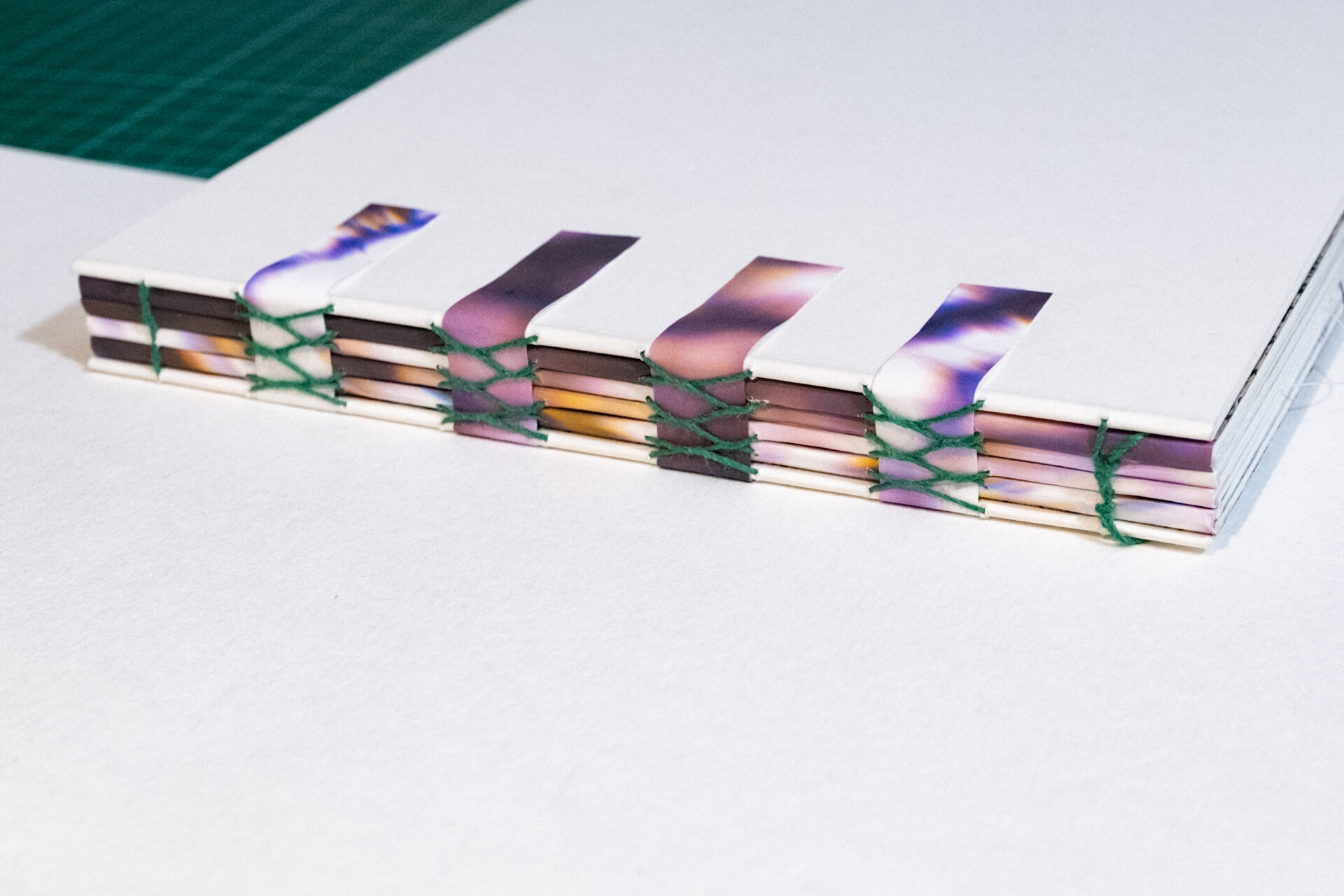

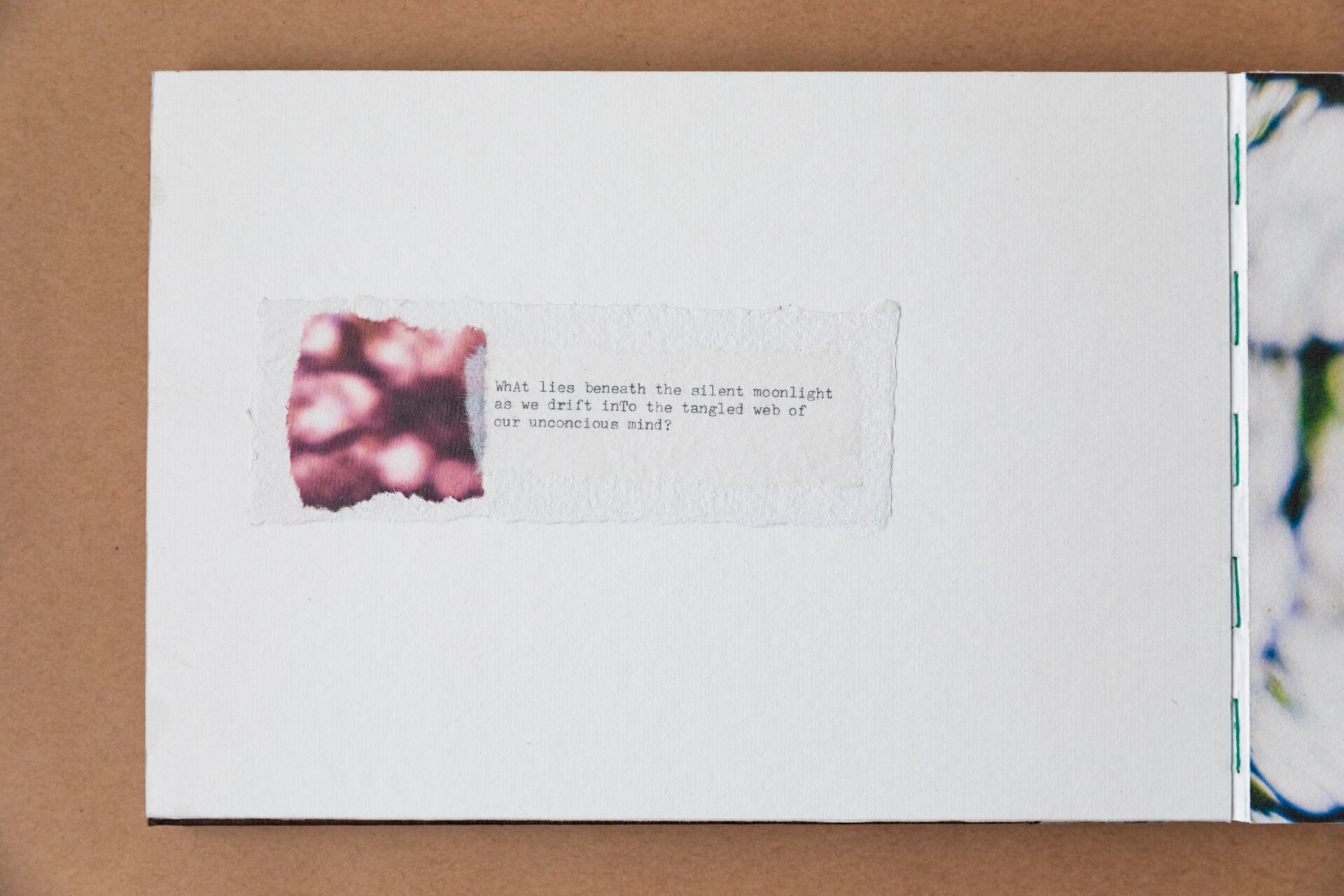

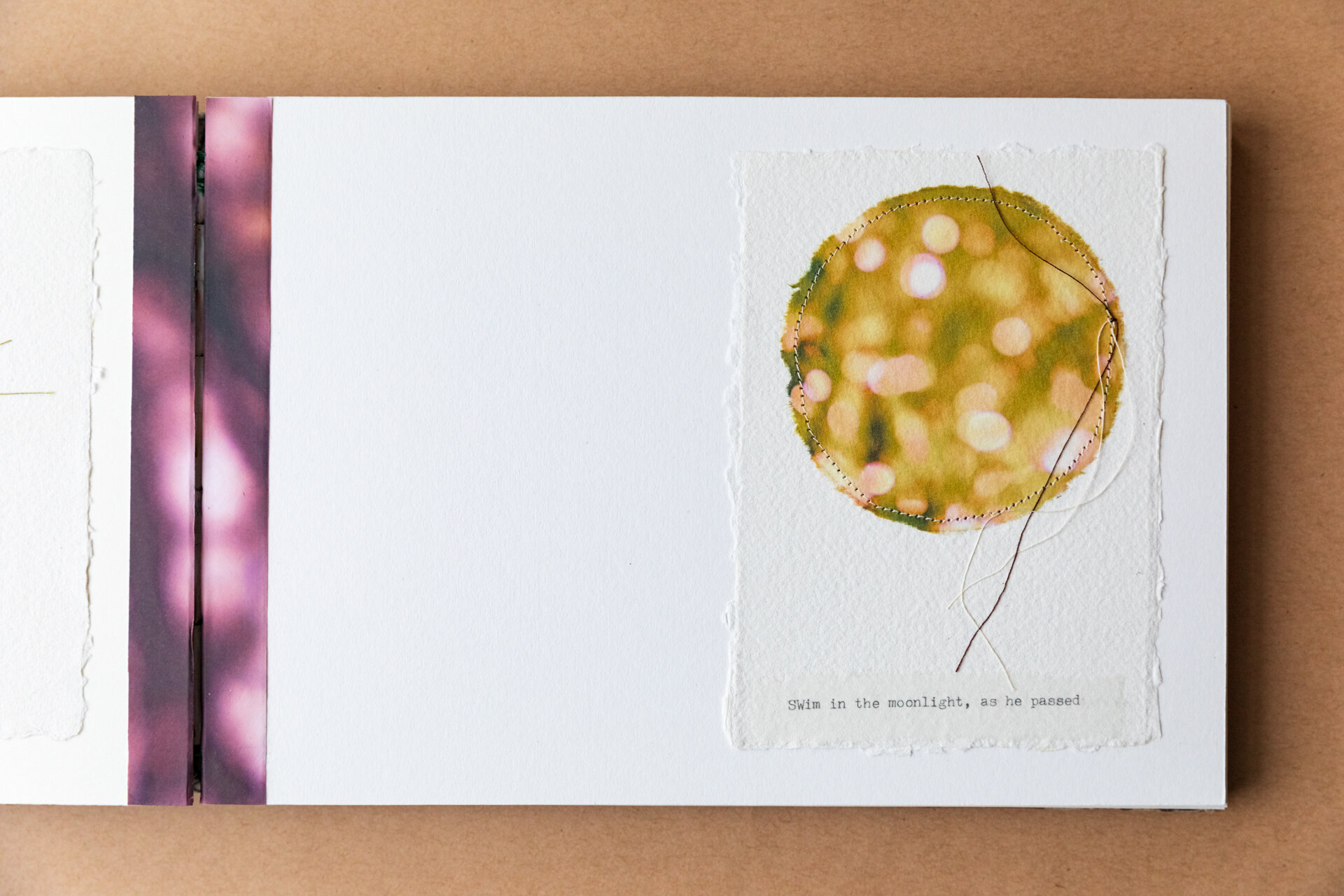



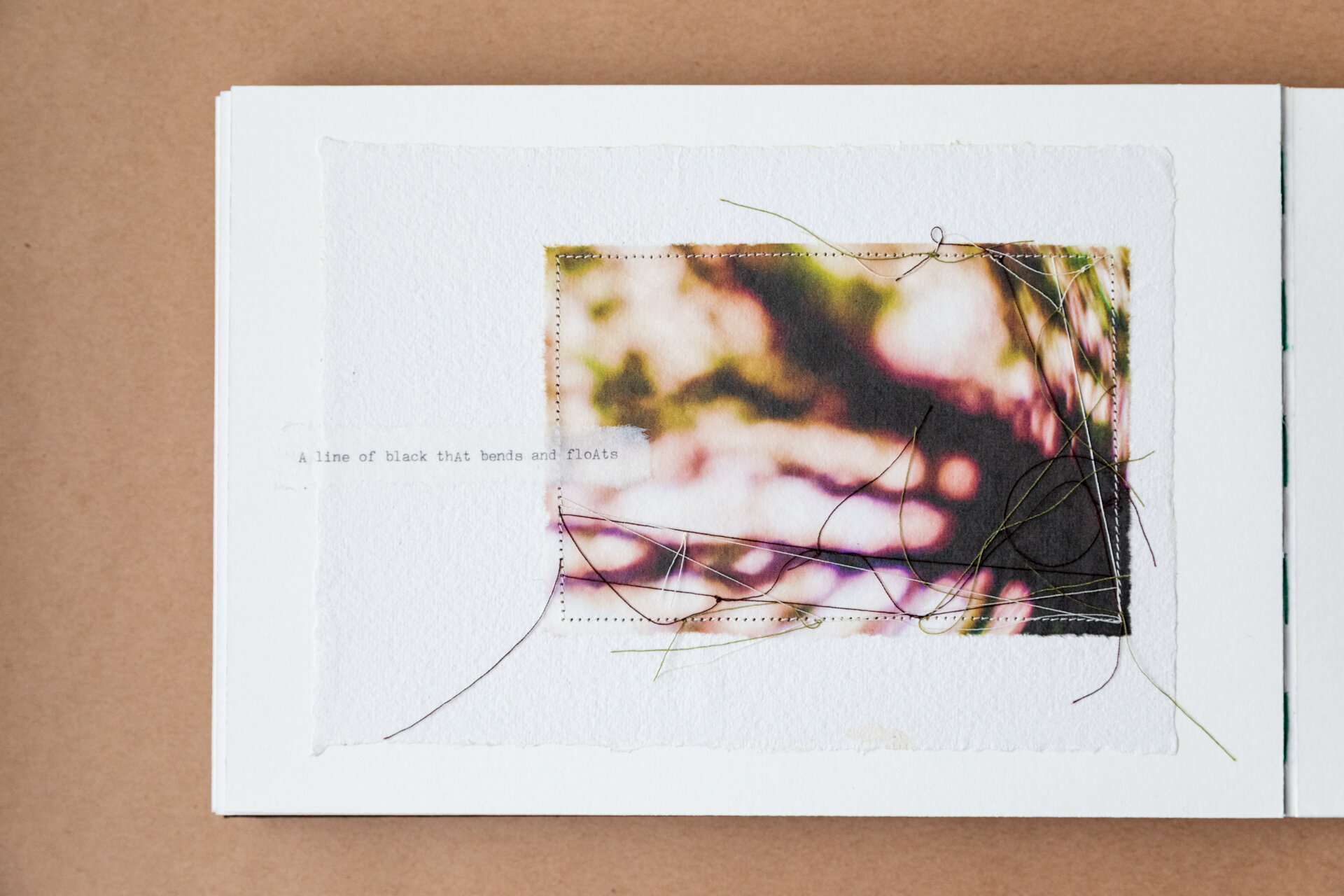
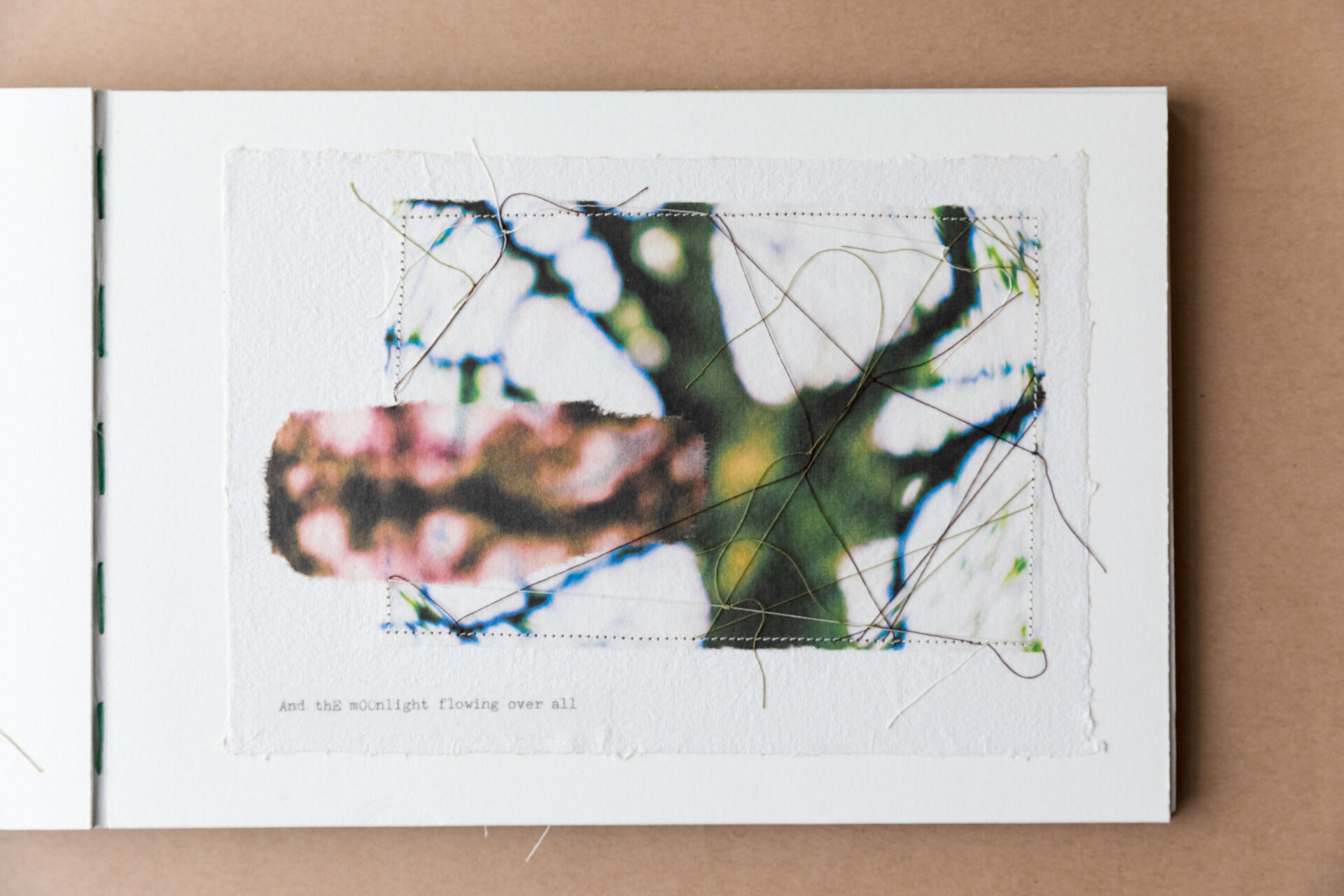
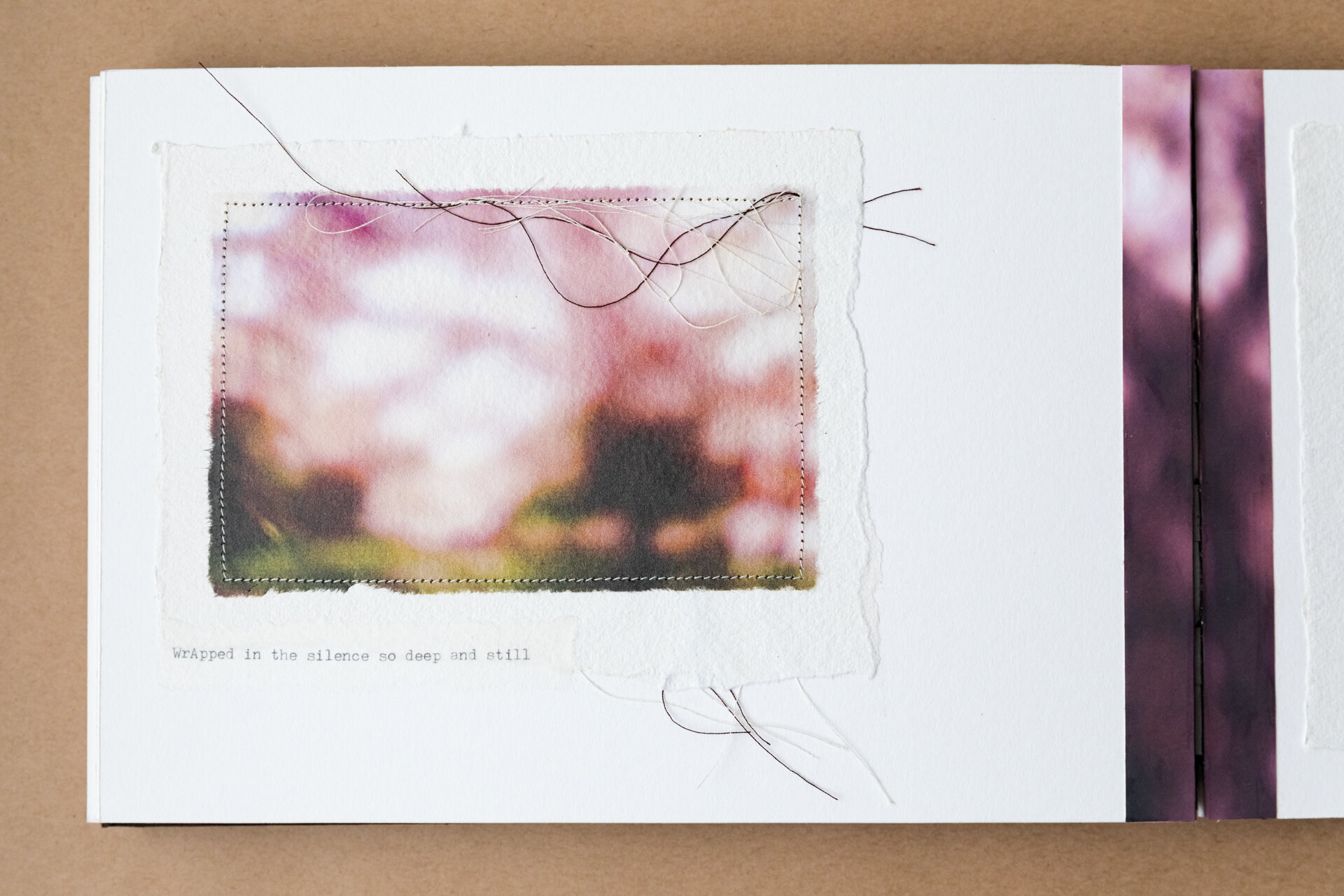



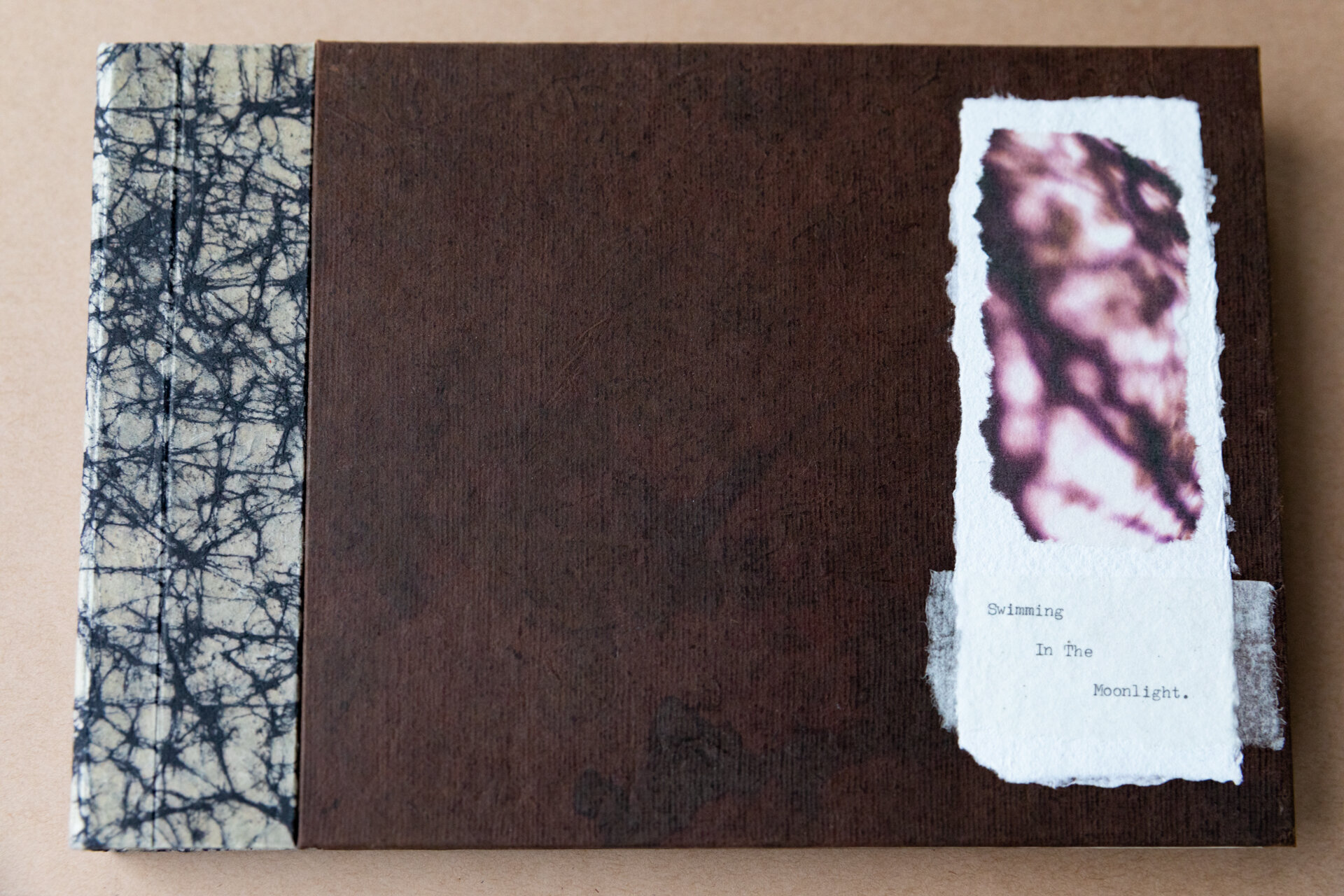
Counting the days in Lockdown
Terrible quality due to the necessary compression, but this is my first GIF. For each day of our 2nd lockdown I photographed a bunch of Tulips. I was fascinated how much they moved in a single day.
My Ghosts
After experiencing the idiosyncrasies of the Black and White Fujifilm FB3000B during our period of Lockdown, I decided it was time to explore the colour expired version: Fujifilm 100C. It demands a sunny, bright day at only 100 ISO and contrasting colours to enjoy its full impact. So with the Land camera’s light meter; if you can even call it that, not really working, the day being pretty dull and the film pack dating back to 2006 nothing was really going in my favour. But as ever, Polaroids and Peel-Apart film are not just about the instant photo for me, there are an abundance of treasures to be found.
Using expired colour peel-apart film produces a unique layering of image making. On my black and white peel-apart negatives The Pull, removing each film from the camera, left random, permanent light streaks interacting across many of the images. The pull on the colour negatives however, behaves in a completely different way.
Depending on the physical speed, flow and strength of the pull the negative is marked with a white substance. A purely physical fleeting act translated into a static moment of time. There is little control over the results and the outcome is purely random. Once the back layer of the negative has been bleached away a partial image emerges, not dissimilar to a photogram or a glass plate negative, but the physical action of the pull has transposed itself in an ethereal and spiritual nature. Once the front of the negatives are cleaned the marks of the human interaction will be washed away. My Ghosts express in visual terms the idea of human presence that was only momentary leaving only traces of its existence.
Newly Acquired Lockdown Skills.
As Lockdown continues so too has my passion for the Polaroid. I have been getting to grips with the 250 Land Camera as well as my SX70 and One Step to produce, I suppose, a form of journal created during this pandemic. The work covers a series of triptychs as well as some good old experimentation and play. I really don’t know where it is heading, but it’s certainly keeping me occupied.
Developing the idea of A New Commodity (see last post), I created four triptychs. Whilst the actual photographs are rather interesting 4x6 images, it’s the negatives that I love. Grainier, rougher and greyer - a perfect reflection of our present times. The scanner adds an extra dimension and unpredictability as it emphasis the light streaks caused either from the removal of the film from the camera or from peeling the film apart - both requiring a certain knack that I haven’t, it appears, quite mastered..
These are my newly acquired Lockdown Skills-set. I have become proficient in Commerce and Economics, Hairdressing (both scissors and clipper skills), Growing veg - in an effort to be self-sufficient (can one live on rocket alone?) and finally Dentistry - a broken tooth from day one of Lockdown did not bode well …
'We want visitors to get lost rather than follow the order'. - Quote - Toshiyuki Inoko. Founder of Teamlab.
Good Morning Tokyo, our final destination.
After a wild goose chase We rocked up at our 20th and final bed of the trip only to find we couldn’t get in. Thanks to nimble hands and a pen we managed to retrieve the keys from a locked box. Our traditional Japanese one roomed flat had a certain 70s feel so we knew it was past its sell by date, but it was fine. Until that is the people upstairs came home in the evening. Then the thin walls reverberated every word and footstep around us, then 8.00am every morning the scaffolding company over the road loaded their trucks. Funny how some things are never mentioned in reviews. The location was great and nothing was too difficult to get to.
One’s not enough.
Here in Tokyo, I began to feel as though we weren’t in Japan anymore. It was the same, but different. Same city mind-set but without the historical beauty or skyscraper magnitude like London and New York. Tokyo is vast, impersonal and digitally noisy but humanly quiet.
We must have only scratched the surface in our week here, but slowly we dug and discovered there was more.
The cleanliness is there, as is the order but it’s a little less rigid. The Christmas lights added a warmth to the neon overload. Everything is bigger here: the shops, crowds, stations and the crossings. We saw some bizarre labelled fashion, but we thought there may be more extremes and creative looks but we didn’t see much evidence of this, its surprisingly bland and predictable, I guess thats globalisation for you.
This is the front.
This is the back!!
It appears to be the latest trend to wear matching outfits.
The Cosplayers add an alternative look to the branded market.
The ride out to Palette City, near Tokyo Bay was spectacular both in daylight and night-time. The views were amazing as you looked back at the city. Then we discovered Teamlab…
The new Mori Building Digital Art Museum: TeamLab Borderless, sounds a bit dull and a bit of a mouthful, fortunately its a concept that belies its name. The world’s first digital museum of this scope and massive scale. 10,000 square feet of it. A totally immersive and interactive experience created by TeamLab, a fast-growing Tokyo collective of so-called “ultra technologists”.
Home to about 50 artworks loosely divided into five areas, orchestrated by a network of 520 computers and 470 high-tech projectors.
Like many elements in Japan, their Art museums are bound by rules, but this place is a change from the norm. Here there are no borders, the art moves with you, as you wander aimlessly soaking in the mesmerising fluid displays in forests, seas, fields of flowers and much, much more. Within all the technology it remains tethered to reality, whether its the change of seasons or when you touch a fluttering butterfly, it promptly dies.
Teamlab say the “borderless” concept is what the real world is like. they want visitors to get lost rather than follow the order.”
The slow shutter speed made the hares appear exoskeletal as they jumped down the corridor with you.
Apart from William Kentridge’s - 'More Sweetly Play The Dance’, this was a breathtaking experiences. Links to Japan’s nature, art and culture are evident in most areas and makes the experience even more unique. The term ‘Museum’ is perhaps a misnomer. this is a digital installation and a very fine one at that.
'Live Like a King'. - Used Brands shop slogan. Takamatsu.
There are many glossy internet write-ups about Naoshima, the art island, with reference to its architecture and art museums.
Well, from our experience they are pretty far off the mark. The art played second fiddle to the beauty of the island.
Naoshima Island supposedly has a reputation as a ‘Mecca for art devotees’. We visited on a Monday knowing 4 out of 5 galleries were closed. But, as informed, there were many outside installations and the stunning Benesse Art Museum to see. Teshima, the sister island’s galleries were also all open.
So off on the ferry we went.
Refreshment stop
What we found, is the ferry company doesn’t run enough island connections to enable you to do both islands in one day - unless you’re a hotel guest, then you can.
We choose Naoshima island because we could see Benesse House, outside art installations and hire bikes and cycle round the whole island.
What we found when we got the bikes was that’s not possible - unless you’re a hotel guest, then you can.
To see the many outside installations you had to leave your bike and walk. The installations were only the examples mentioned on the internet and while they were fun, they had become teenage selfie centres. Yayoi Kusama’s ‘Pumpkins’, being the main contenders.
Each of gallery’s carry a hefty price tag. Chichu Art Museum is the most raved about with a fee of £35. But it was closed.
Benesse Art Museum is a stunning concrete homage to brutalist architecture, that’s where it ends. This was not a curated art museum, this was a private collection. An incoherent small group of artwork, that had been randomly acquired. They had no narrative and bore no relationship to each other or the space around them. Except for Hiroshi Sugimotos seascapes series - presented in an inspired setting but access into the space was denied. You probably had to be a hotel guest.
Before we knew it we had covered the entire space and seen everything. We left the gallery feeling underwhelmed.
It reminds me of how wonderful Yorkshire’s Wakefield Sculpture Park is. Free, huge and staggering in its wealth of artistic brilliance. I can’t help but feel how lucky we are in The UK.
Hiring the bikes was brilliant and made it such a lovely day. The higher we climbed the more amazing the views. One minute we were bathed in glorious sunshine then the next it went black. It was like a piece of theatrical art, as we watched a storm approaching from behind the islands.
The lightbox looks so wrong that I like it.
The islands across the water look beautiful. Like nothing we have ever seen before. They are worth returning to another time. But, Naoshima is not a ‘Mecca for art devotees’, the art is the expensive sideshow.
Road mirrors for the Art Museum Bus came in handy.
We got the high speed ferry home having saved potentially £200.
'Please refrain from acts that are annoying to others'. - Food-Court Rules.
As previously mentioned, another reason to travel over to Nagasaki was to go and see the Sumo Wrestling.
We bought our tickets in England as soon as they were released about 8 months ago. As promised, our tickets were waiting for us at our hotel when we arrived. We travelled two hours to the city of Fukuoka to watch the tournament that everyone over the age of 40 appeared to be glued to on both TV and the newspapers.
Waiting the arrival of the Sumo Wrestlers
Sumo wrestlers are a lot like geishas, in as much that both their professions occupy all aspects of their lives. They have to live by rules that dictate their daily routines and decorum in and out of their sumo stables. As far as clothing is concerned, they are required to dress traditionally whenever seen in public. Interestingly, the specifics of how they are dressed is determined by their rank. For instance, lower ranked wrestlers only get to wear Yukatas even in winter. Sumo is a sport steeped in history and is still closely associated with its Shinto principles.
Inside, around the sacred arena, everyone sits on tatami mats or raised cushions in marked bays. Everyone takes food, beer and a few banners to hold. This is a long day and everyone takes supplies into the arena with them.
Oh my goodness how the ladies love the Sumo. In and out of the stadium, they were shouting, clapping, cheering and waving their banners. They queued behind the restriction tape desperate to get a photo of their favourites sumos. The men took a quieter approach and drank lots of beer.
Crowd control.
Unfortunate losers has to leave early.
Sumos are banned, by the Sumo Association, from driving their own cars.
Our day at Sumo was fascinating and very entertaining. It is potentially a sport with an uncertain future, as the harsh lifestyle makes it more and more difficult to attract new recruits.
So it’s farewell to Nagasaki. We are off to Hiroshima next.
'We look forward to returning without traffic accident.' - Car-hire Slogan. Nagasaki.
Nagasaki was the only major port open to foreign trade during Japan's era of isolation, and the Chinese and Dutch were the only traders allowed in the city. Today, evidence of both these countries can be seen in various quarters of the city and in the food. In more recent history, Nagasaki became the second city after Hiroshima to be destroyed by an atomic bomb towards the end of World War Two.
We arrived late at night in the pouring rain, of course.
For us, travelling all the way over to Nagasaki was about seeing a variation of character and culture, Gunkanjima Island and Sumo Wrestling. Nagasaki isn’t just about the atomic bomb devastation, but it is a big part. My goodness though, once you’ve walked round the no-holds barred museum and seen the utter horror of it all, it is quite unbelievable how an area can come back from that.
Nagasaki feels different, a bit more chilled and very, very steep. The cars are not quite as pristine and the taxis still sport the white lace covers but the drivers don’t always wear white gloves.
The streets are less sanitised and there is a mixture of old and new and higgledy-piggledy disorder as you leave the centre.
Moving house looks hardwork.
The streetcars add a nostalgic charm, they are great for flitting round the city and we loved them.
Gunkanjima - Battleship Island was our initial reason to go to Nagasaki and we were devastated to discover that there were no boats landing there for the foreseeable future due to recent typhoon damage. Absolutely gutted, another one to add to the list of ‘Unseens’.
Instead, we hired a car and went over to the ‘hidden potteries’. Well, they’re not that well hidden - it was like Hebden Bridge mid-summer. What we did find in the most beautiful village of Okawachiyama is the studios and kilns are all closed and turned into tourist shops, all selling traditional Japanese porcelain with no contemporary pieces. We enjoyed the mountainous backdrop and the beautiful setting.
We then drove to Arita, the home of porcelain. We saw the outlet stalls lining the roadside and decided to keep driving.
Most independent businesses appear to have very infrequent, random opening times. Maybe the big shopping malls have taken their business away?
The most peculiar thing is that here in Nagasaki, everywhere closes at 8.00pm. With the exception of a convenience store, a Pachinko Parlour or an occasional fast food restaurant. If there are late night bars and clubs hidden away you certainly don’t see them or hear them.
Pachinko customer.
So where is everybody?
Fried ones life, deep fried scissors - Dinner menu - Google translate.
Good morning Kyoto, Jonny Monsoon has arrived. Yes we bought the rain, again. Luckily, umbrellas are given out freely to anyone who needs one., trusting you will return it sometime.
Luckily by the afternoon, the sun was back out.
Kyoto’s own Thunderbird-esq tower sits over the small modern hub of the city with high-rise shopping arcades, pachinko blocks and a multitude of traint-racks. Does each city have its own tower? I hope so.
We particularly liked the area around our hotel, next to the railway lines.
Kyoto was once the country capital, which Tokyo later became. Thanks to being spared by the US Air Force bombing during World War II, Kyoto has a larger percentage of old housing stock than any other Japanese city. it has countless temples, shrines and other historically important structures, all in a relatively small area.
Once you leave the modern hub, it starts to feel like the equivalent of Hampstead, London - old money, really expensive boutique shops that don’t seem to need to open much, tiny restaurants and the introduction of a coffee culture. In pockets around the city It’s also geared up for tourism due to its abundance of cultural sights,
In a country of quiet, reserved people, no noticeable wildlife noises and many rules we were rather shocked whilst at a shrine garden - a place for peace and meditation - the non-stop clicking of cameras, texting and chattering by the tourists was unreal, it certainly wasn’t like James Fox’s experience on BBC4 that’s for sure!
The gardens are incredible and it was wonderful to catch the late Autumn maple leaves and Sharron Fruit trees. I’m hoping the colours will still be in gardens of Kanazara.
I’m fascinated by the The Kimono it can be a stunning work of art. The patterns and colours are often mismatched so elegantly. The silk kimonos can be beautiful and worth a small fortune. You can buy them secondhand but they are very heavy and cumbersome despite their elegant look. The Obi belt in all its variations is very symbolic and when 9 meters or more is artistically wrapped, the mismatched pattern and clashes of colour against the kimono gives it its unique look. The whole ensemble comprises of many elements as i found out when I tried the informal Yukata - cotton kimono and full Obi.
It comes as no surprise that the kimono is generally no longer worn on a daily basis by most Japanese, they are still proudly worn for special occasions such as weddings and coming of age ceremonies. Occasionally we stumbled across shops with contemporary kimonos. The formal obi’s hanging like works of art. Stunning hand painted or woven silks in contemporary designs with quirky little twists.
In Kyoto some older monied locals still wear a kimono but less often with the formal wide obi. The cotton yukata robes, traditionally used for ryokans have now become accepted as informal outside wear with a simple sash. As its the onset of winter the sight of a beautiful bright kimono is a rare treat, but the winter sombre colours and outer jackets are equally beautiful.
Kyoto has a number of Kimono hire shops where you can rent a kimono and all its accoutrements and ‘enjoy seeing the sites and take plenty of selfies’ it now tends to be the courting teenage boys and girls dressing up for the day.
The night brings a different atmosphere, but you’ll have to wait another day for that.

